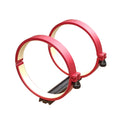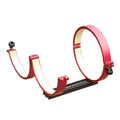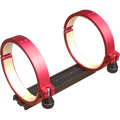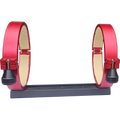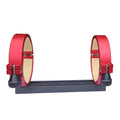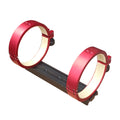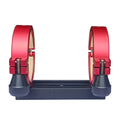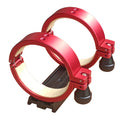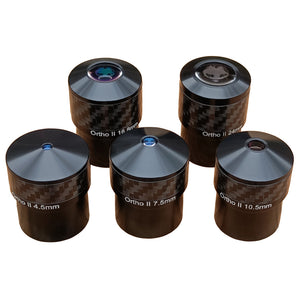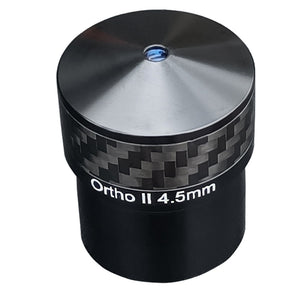Telescope Eyepiece
The eyepiece is the terminal optical component of an astronomical telescope’s imaging system. Its core function is to magnify the real image formed by the objective lens, creating a virtual image observable by the human eye. The working principle is based on geometric optical design:
-
Optical Path Conversion
The objective lens converges light from distant celestial objects into an inverted real image. The eyepiece, using convex lens groups (e.g., Kellner or Plössl designs), refocuses this real image and adjusts the light path to emit parallel rays, matching the human eye’s focal length (~25mm), ultimately forming an upright or inverted magnified virtual image. -
Key Performance Parameters
- Focal Length: Determines magnification (objective focal length ÷ eyepiece focal length). Short focal lengths (e.g., 6mm) suit high-magnification planetary observation, while long focal lengths (e.g., 32mm) provide wide-field deep-sky views.
- Field of View: Wide-angle eyepieces (70°+) capture broader celestial regions, enhancing immersion.
- Coating Technology: Multi-layer broadband coatings minimize light loss and improve contrast, critical for faint nebula observations.
-
Ergonomic Design
Modern eyepieces incorporate adjustable eye relief, anti-glare baffles, and ED glass for chromatic aberration correction, accommodating eyeglass wearers and reducing edge distortion.
-
Black
You renderd the snippet swatch.liquid with the name of a product option — 'Color' — that does not belong to your product.
Use {% render 'swatch' with 'name of your product option here' %}
Example: {% render 'swatch' with 'Color' %}
This is case-sensitive! Do not put in 'color' if your product option name is 'Color'.
You renderd the snippet swatch.liquid with the name of a product option — 'Size' — that does not belong to your product.
Use {% render 'swatch' with 'name of your product option here' %}
Example: {% render 'swatch' with 'Color' %}
This is case-sensitive! Do not put in 'color' if your product option name is 'Color'.
You renderd the snippet swatch.liquid with the name of a product option — 'Specification selection' — that does not belong to your product.
Use {% render 'swatch' with 'name of your product option here' %}
Example: {% render 'swatch' with 'Color' %}
This is case-sensitive! Do not put in 'color' if your product option name is 'Color'.

